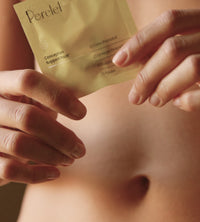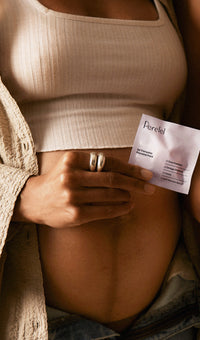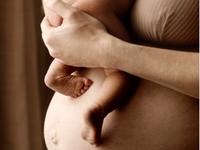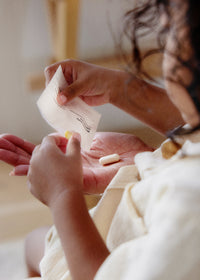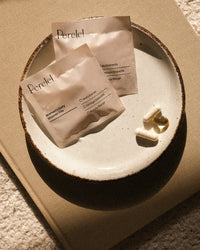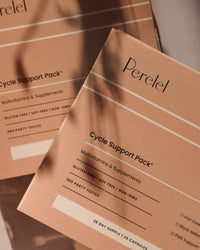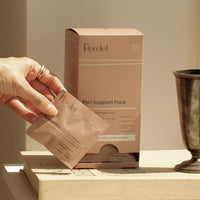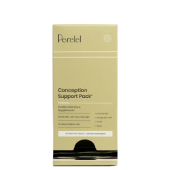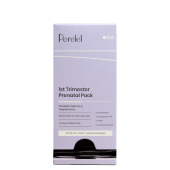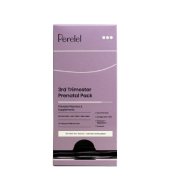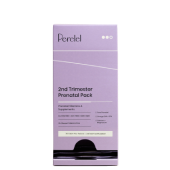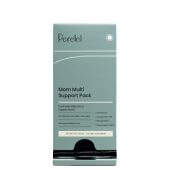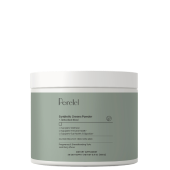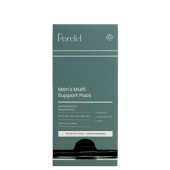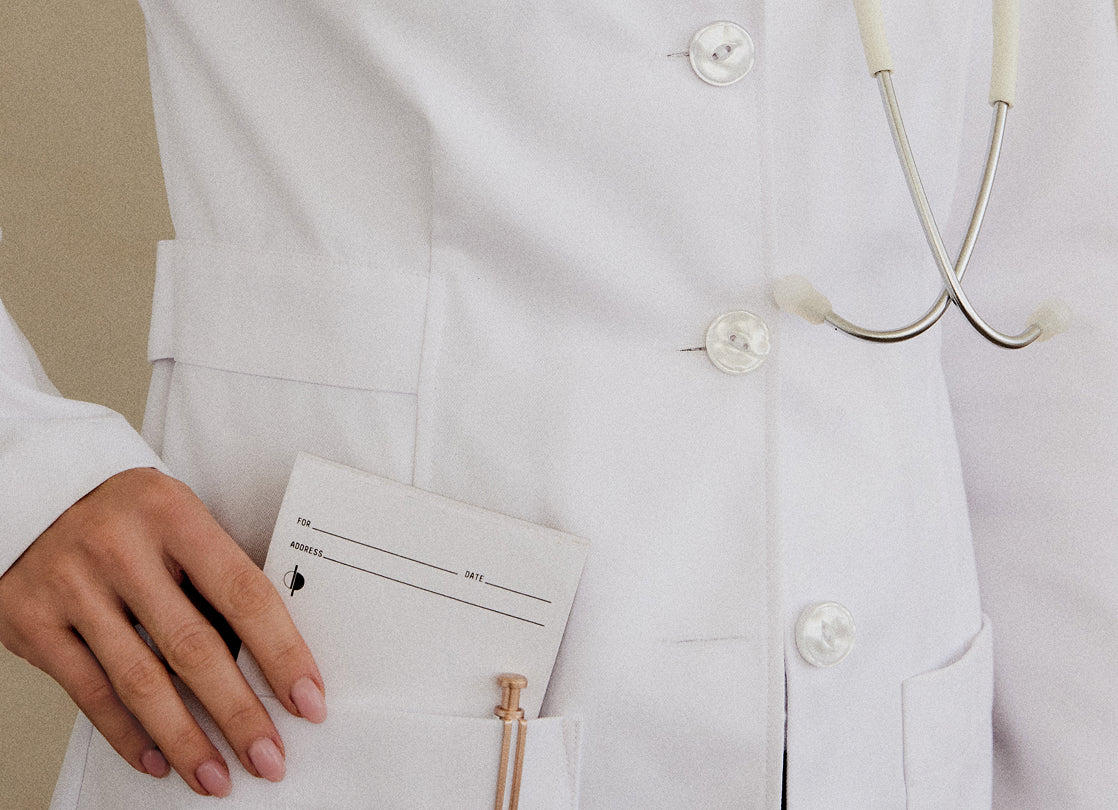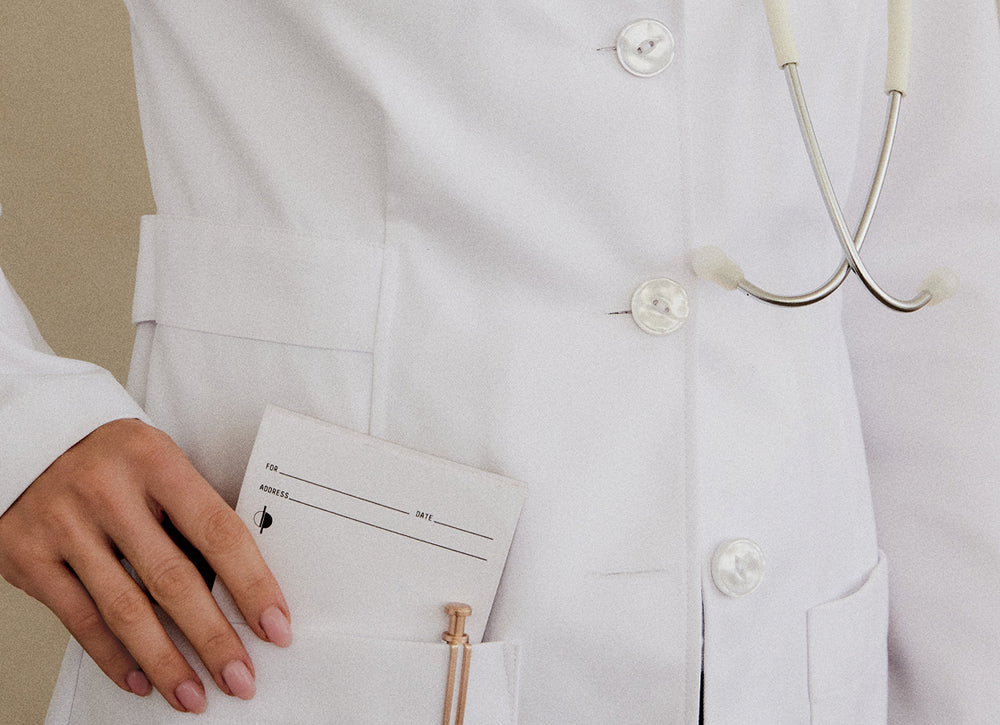By Jessica Lopez
Whether you’re preserving your fertility for the future or beginning an IVF journey, egg freezing is a vital part of many fertility game plans. And what you do today can affect your egg health tomorrow, so we sat down with renowned reproductive endocrinologist, Dr. Andy Huang, MD, FACOG, to learn how to best prepare our bodies and what to expect through every step of the process.
As Hollywood's go-to fertility specialist, Dr. Huang has received numerous awards and recognitions for his work and research, and his extensive explanations helped us understand our fertility in a new way through this conversation.

The Basics: Egg Quality & Fertility
At what age should I freeze my eggs?
To begin, it’s important to understand a bit more about our eggs.
“Biology works in such a way that the stem cells for sperm don’t change as a man gets older, so sperm quality is not going to change much with age. A woman’s uterus also doesn’t change much with age, so the same woman can get pregnant with similar success rates whether she’s 20, 30, or even 45-years-old. But the one thing that changes as we all get older are eggs, because the stem cells that make eggs stopped making eggs when you were born,” Dr. Huang explains.
“Two things are happening as we all get older, with respect to our eggs. First, you get fewer. Second, their quality changes. So for that reason, the earlier you freeze your eggs the better,” he continues.
$41.14
First 3 Mo
First 3 Months
$32.90
First 3 Mo
First 3 Months
$111.06
First 3 Mo
First 3 Months
Shop the Article:


Egg Freeze Support Pack*
Shop Now


Fertility+ Support
Shop Now


Fertility Foundation Bundle
The Red Ball-Blue Ball Analogy for Fertility
“To paint the picture of egg quality, I have everyone imagine that sitting next to them is a big bucket. In this bucket there are two colors of balls—red and blue. The red balls are your healthy eggs, the blue balls are your unhealthy eggs and every woman always has a mix of red balls and blue balls. Every month you get a new bucket,” Dr. Huang says.
"The earlier you freeze your eggs the better."
Amongst these balls, the ratio of healthy eggs to unhealthy eggs and the amount of balls in the bucket changes with age.
“When you’re 20 years old, and you have 20 eggs every month, maybe one out of every three eggs is a good egg. But you have 20 eggs—so you can imagine if one out of every three eggs is good, there are a lot of good eggs every month. When you’re 30, I’m going to estimate that maybe one out of every four eggs is good. That’s still a good number because you still have 15 eggs every month.
But when you’re 35 it might be like one in five eggs are good—and now you don’t have as many—now you’re down to like 12 eggs per month.
When you’re 40 years old, now you’re down to like eight to ten eggs per month, and maybe one in ten to one in twelve eggs are good. You see how the numbers shrink, and the probability of a good egg decreases as women get older,” Dr. Huang explains.
Here’s the kicker that’s crucial to understand.
A bucket of balls—whether ten or twenty—sounds like a plethora right? But amongst this bucket, only one egg will be “chosen” by the body each month during ovulation. This is where the quantity—and more importantly the quality of eggs comes into play.
And, of course, the health of our eggs can exist on a spectrum–despite age. “In between 20 and 45 years old there is a mixture of how many balls are in the bucket for every woman. So, some women who are 30, might have fifteen balls in the bucket. Some 30-year-olds only have five.” Dr. Huang explains.
If the numbers game has you spinning, Dr. Huang has a comforting reminder: “How many eggs does it take to get pregnant? One.”
“How many eggs does it take to get pregnant? One.”
How do you prepare for egg freezing?
With a bucket of balls in your mind, and numbers buzzing through your brain, it’s important to consider what we can control: lifestyle and wellbeing. What’s the best way to prepare for the process? “Healthy living, eating well, minimizing processed foods, and a diet rich in antioxidants helps improve egg quality,” Dr. Huang says.
“Maintaining a healthy weight—so if you’re overweight, losing a little weight—or if you’re underweight, gaining weight. We don’t like either extreme over or under. Minimize stress. All these things contribute to healthy eggs,” Dr. Huang says, “but in the end it’s still age.”
“This is why Perelel’s development of an Egg Freeze Support Pack to enhance and improve egg quality, may give women a little edge on having a higher probability of having a red ball at a certain age.
“Science is always trying to think of ways to say, ‘look, we know we can’t make women have more balls in the bucket. We can’t do that. A woman is born with all the eggs that she has. But are there ways that we can try to improve the quality of eggs, and maybe every month give you that little edge, and give you one extra red ball?’ This is why Perelel’s devotion to trying to improve egg health and pre-pregnancy health is very helpful.”
Tips to Prepare Your Body for Egg Freezing
- Eat the rainbow. Focus on nutrient-rich foods for fertility, a variety of plants and vegetables, and an increase of antioxidants.
- Avoid processed-foods or excessive caffeine, alcohol or tobacco.
- Maintain a healthy weight.
- Minimize stress.
- Add vitamins for egg freezing to your daily routine.
What is the process of egg freezing?
Armed with statistics and actionable items, let’s learn about what the process looks like. Once you've made an appointment with your fertility provider and made a decision that egg freezing is right for you, “the timeline is like running a race. The goal of the race is to get all of the eggs across the finish line together,” Dr. Huang explains.
Step 1: Cycle Prep
“A typical IVF or egg freezing process takes about five weeks. When a woman’s period starts she comes in and we see her on the second or third day. She has all these balls in the bucket—hopefully. Let’s say there’s twelve to fifteen follicles. Of those follicles, your body is going to try to grow one, but we don’t want just one. We put you on birth control pills for the first two weeks. And the purpose of birth control pills is to help synchronize your follicles. We want to get them all behind the starting line, before we say go.
- May involve starting birth control.
- Cycle testing.
- Start ordering medications + prepping for hormone injections.
- Ask questions!
Step 2: Ovarian Stimulation
“At the end of two weeks we see you again and we’re checking to see that all your follicles are ready—they’re all behind the starting line. We see that and say ‘great, you’re ready.’ So, we stop the birth control pills for five days and then you start shots. The shots are to help grow the follicles together. They're kind of like steroids to push them ahead and get them across the finish line. These small little shots that go under the skin around the belly button. On average, you do about two shots a day, for eight to twelve days. These eight to twelve days is when most of the monitoring is happening, so you’re coming in every two to three days. We watch the follicles get bigger and bigger. They start like little pomegranate seed size, they get to little blueberries, and then get to little grapes. When they get to little grape sized follicles we say ‘great, you’re ready.’”
- Stop birth control pills.
- Start hormone shots—about two a day for eight to twelve days.
- Monitoring with your fertility provider ever two to three days, which may involve ultrasounds or blood tests.
- Ends with a trigger shot to get to egg retrieval.
Step 3: Egg Retrieval + Freezing
“It’s not perfect, sometimes a few don’t grow. But in an ideal circumstance, in a woman who starts with ten to twelve follicles, we want to get as many of those follicles to grow together. Once your follicles look ready we give you a trigger shot, and then two days later we harvest the eggs. It takes five weeks to get to a ten minute procedure.
“The procedure is under ultrasound guidance, you’re asleep with an IV sedation, so you’re very comfortable. While you’re asleep we do the same vaginal ultrasound, but we have a little needle that goes into those grape sized follicles to suck out the fluid and find the egg.
“The eggs are then placed in culture media and they’re allowed to mature a little bit in vitro—in vitro means out of the body—and then two to four hours later they’re frozen."
- A 10-minute procedure under anesthesia—you're usually in the clinic for two hours.
- Eggs are frozen the same day.
- At this point, your fertility provider will know how many eggs were retrieved but they will not know the quality of the eggs.
"The reason I spent a lot of time talking about the red and blue balls, is that we won’t know which eggs are red or blue, we just know how many we got. We have embryologists that are counting the eggs and within minutes of the procedure they’re able to tell us, ‘we got ten eggs.’ Sometimes we’re lucky to get even more than that. But when we get those results of ten or twelve or fifteen eggs, all we know is quantity. We don’t know the quality of eggs yet. There’s no test that we can do on a woman—like a blood test or an ultrasound—that tells us the quality of eggs.
Step 4: Follow-Up Appointment
“The only way we can assess the quality of eggs is to infer based on age. And then later on when we take eggs that we’ve frozen, we can thaw those eggs, put it with sperm, create the embryos, and then we can test quality. So, when we freeze eggs, the hardest part is I say, ‘ok we’ll do our best to get 15 eggs for you, you’re 35, let’s get 15 eggs. Among those 15 eggs hopefully we’re gonna have some great chances of success but I won’t know yet. I won’t know ‘til we get these eggs, thaw them and create the embryos. Then I can tell you, 'Great news, we have two healthy embryos,'” Dr. Huang concludes.
What are the side-effects of egg freezing?
“The side effect that most women have is bloating. And the more follicles you make—great—but you get more bloated the more follicles you make. Another side effect is some women get headaches. Otherwise, they’re very well tolerated."
Possible Side-Effects of Egg Freezing Hormone Shots
- abdominal pain
- bloating
- nausea
- vomiting
- diarrhea
"What you want to avoid is not making too many eggs. It’s a balance between numbers and quality. We’re never trying to get too many eggs. When a woman starts to make over 25 eggs, they start developing what we call Ovarian Hyperstimulation Syndrome (OHSS) and it’s very uncomfortable. So that’s when the bloating gets pretty significant. We don’t want to overstimulate anyone.”
What happens when you thaw a frozen egg?
“Usually if it's frozen, an egg has an 80 to 90 percent survival rate. That doesn’t mean the egg is good, it just means that if we freeze it, it has a chance of being red or blue.
“Even with fertilization, we still don’t know which ones are red or blue. We won’t know which ones are red or blue until they fertilize and grow to about 100 cells. When they get to 100 cells, technology now allows us to test these embryos by taking out a few cells and sending those cells to a genetics lab. That genetics lab comes back with the results that tell us, ‘aha! We have a red ball here that’s a healthy boy, we have a blue ball here, and so on.’
“Once you get to the embryo stage and there’s 100 cells, it’s safer and more accurate to test them. So, if a couple carries cystic fibrosis, then we can screen for that and make sure that the child has very little risk,” Dr. Huang says.
Is there an expiration date to frozen eggs?
“Eggs can be frozen indefinitely. They’re frozen by a technique called vitrification, which is a very rapid flash freeze. We’ve had successful pregnancies with eggs frozen over ten years. But the hard part of this is that some women freeze their eggs for ten years, and then we find out that there are no red balls. There is some unpredictability and uncertainty that is inherent with egg freezing because it is ultimately a numbers game, and even if I tell you one out of three should be red, sometimes we’ll go ten without having a red,” Dr. Huang says.
"We’ve had successful pregnancies with eggs frozen over ten years... there is some unpredictability and uncertainty that is inherent with egg freezing because it is ultimately a numbers game."
Generally speaking, “when you freeze and thaw an egg, survival is 80 to 90 percent, so you might lose ten to twenty percent of the eggs you freeze. When you freeze an embryo, the survival is over 98 percent. It’s a lot better when they’re embryos, they’re just robust and stronger with 100 cells.
“When we get a healthy embryo, a healthy embryo is a healthy embryo. The chance of having a baby with a healthy embryo, coming from a 30-year-old or a 42-year-old is the same—it’s 65 to 70 percent among the top centers. But the probability of finding that egg that’s going to result in a healthy embryo, varies based on age.” Dr. Huang concludes.
Thinking about freezing your eggs? Shop doctor-made vitamins to support your body through the egg freeze process now. Plus, read about chef Camilla Marcus' egg freeze journey now.
This article is for informational purposes only. It is not, nor is it intended to be, a substitute for professional medical advice, diagnosis, or treatment and we recommend that you always consult with your healthcare provider. To the extent that this article features the advice of physicians or medical practitioners, the views expressed are the views of the cited expert and do not necessarily represent the views of Perelel.




